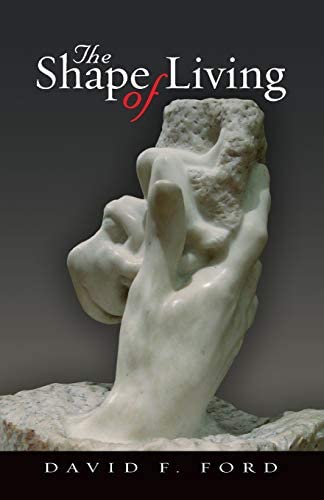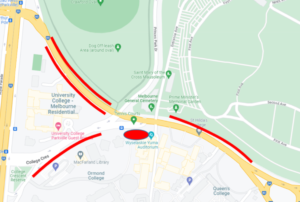View or print as a PDF
Easter 2
16/4/2023
Acts 2:14a, 22-23
Psalm 16
John 20:19-31
In a sentence:
Whatever resurrection life looks like, it does not leave our history – us – behind
Identifying the dead
The fan of the TV murder mystery knows that an essential part of many of those stories is identifying the dead body. By this we confirm that the deceased is the person we think she is.
When we identify a living person, it is by recognising her face or voice. If we know her very well, we might even recognise her by smell or the feel of her skin. That is, we identify the living by sensory means, by what we naturally are, as perceived by sight, sound and touch.
When we identify a person who has just died, sight is the only sensory means left. The detective pulls back the pall, and the face is recognised. Often in the murder mystery, however, the story is more complicated than this. The trauma to the body or years in a shallow grave means that seeing doesn’t tell us much. Our senses fail us here or, perhaps better, the natural, sensory being of the person who died fails us because what remains can’t tell us who this is.
And so, where the person’s natural appearance is no use, the investigator turns to ‘history’ – to what the person did or was done to him. Now it’s about tattoos and scars, dental records and prostheses, or the remnant of a train ticket found nearby. These are historical ‘additions’ to the natural person, the unique marks our particular experience of life adds to our natural embodiment.
Thomas and the marks of crucifixion
Each year on this Sunday we hear John’s account of the appearance of Jesus to the disciples, in the absence of Thomas. Thomas, who begins in doubt, soon makes one of the strongest declarations about Jesus in the Bible: ‘My Lord and my God.’
We have all wondered with Thomas and then wondered at Thomas and his credulity. Our problem is that he apparently has Jesus standing in front of him, but we have the story of Jesus standing in front of him – natural Jesus, perceived by the senses of sight and hearing and touch. And the story doesn’t seem to be enough for us. Thomas and the other disciples seem to have it easier than we do.
But let’s look at the details of the account and, in particular, at how Thomas comes to his extraordinary confession. We all know that Thomas insists on seeing Jesus’ wounded hands, feet and side. This seems to be a gross materialism – ‘Let me hold him, and I’ll believe he’s here’.
Yet, we don’t usually note that this is also how the other disciples identified Jesus:
When it was evening on that day, the first day of the week, and the doors of the house where the disciples had met were locked for fear of the Jews, Jesus came and stood among them and said, “Peace be with you.” After he said this, he showed them his hands and his side. Then the disciples rejoiced when they saw the Lord. (20.19f)
When Thomas says, ‘Show me the marks’, he asks for nothing more than what the other disciples have already had. Thomas doesn’t want to see ‘Jesus’ in some ‘There you are, old chap’ kind of way; he wants to see the marks of crucifixion. It could only be the risen Jesus if those marks were there.
This is very odd. Thomas and the others knew what Jesus looked like and sounded like and so could identify him by his natural features in the normal, sensory way. Yet it is by the marks of crucifixion that they identify him. This is to say that what Jesus ‘looks like’ – his natural person – doesn’t matter here. What matters is nothing natural – nothing sensory – but only the traces of Jesus’ story – his hi-story – summed up in the wounds in his hands, feet and side. Jesus is what he did and what was done to him. It is the (hi-)story which matters, the human and social dynamics which Jesus embodies and is.
Resurrection as the recovery of the cross
If this is true, something very strange happens to resurrection-talk. If Jesus is what was done to him, the rising of Jesus is the rising of just that – the rising of what Jesus did and of what was done to him. The rising of Jesus, then, is not merely the breathing-again of a dead man but the rising of the cross: the recovery of the cross as the heart of the matter. The resurrection is not ‘once-dead friend Jesus’ who comes back to life as some proof of life after death; the resurrection is the return of the crucified – the return of the cross. We are not, then, to believe in the resurrection but in the cross. It is the cross which is the scope and completion of Jesus’ work (‘it is finished’, John 19.30); the cross is the ‘load-bearer’ here, as we said last week.
This is not just neat theology; it makes a difference in real and specific human experiences and contemporary challenges. Some of you have read the op-ed piece I wrote last week, linking this interpretation of Thomas’ experience with the proposed indigenous Voice to Parliament. I won’t say anything more about that this morning.
But we can also connect Thomas with the fact that we (as a congregation) are here today in this particular place because we are about to move away from 170 years of one way of being, into something very different.
The raising of the wounded church
It might be (just a little) overdramatic to speak of our congregation’s present and immediate future as being a matter of death and resurrection. (It’s probably more like an amputation, which is bad enough!). But we do symbolise something of the wounds of the whole church in its current condition in broader society. It is not only the state of the property at Curzon Street which sees us having to move; if we were still the community which built those buildings, we would also be able to take care of them. But we’re not that community anymore, and maintenance and insurance and other overheads have pushed us into deficit budgets. The crisis of UMC aside, we were (are) in serious trouble. We should use it carefully, but dying is a useful metaphor for understanding many – perhaps even most – Christian communities in Australia today. The possible exception here might be recent, more successful migrant-based churches and a few Pentecostal megachurches. However, even many of these might yet be found just to be running late for their own funerals.
Whatever we think has caused this, the wounds in the Body of Christ are deep. And the question is, what would a resurrection look like? All we can say about this is that a resurrected Body of Christ – tomorrow’s church – will bear the marks of its suffering and rejection, and yet, those marks and wounds will not debilitate. The risen body of Jesus – marked as it is – is no longer on the cross and no longer wrapped in tight linen bindings. So also it will be for the Body of Christ which is the church, and this is the hope with which we contemplate our future.
We are everything which has brought us to this point. And our future can only be one that catches us up and carries us forward, history and all. The promise of this place, then, is not a sudden burst of new people coming in, filling this space in no time and out-shining all that has gone before. The church does not believe in flash-in-the-pan, won-the-lottery, dropped-out-of nowhere miracles. This is what we think Thomas and his friends got – a sight and sound spectacular. And yet, such a spectacle would prove nothing. So what if one dead person once rose from the dead? Quite seriously – so what? ‘Do you believe because you have seen?, asks Jesus, as if to imply, ‘What kind of belief is that?’
The church does not believe in miracles like this. It believes, rather, in the story of a history of a transformation of death: a scarred but living and strong body of Jesus, which then become the scarred but living and strong Body of Christ – even the church.
If we were to come here – and this has not yet been decided – it would be so that we might be both the congregation we have known and the congregation God might raise us into. Any future of the church is not simply a cutting itself free of its history of success and failure. The church’s future is a carrying-forth and transformation of all that. If we come here, and if this is in the hope of anything in any sense like resurrection, then we must both remember everything and also look to see it all transformed.
‘Do you believe because you see?’, Jesus asks us. No, we believe because we hear that history’s tragedies are just the nothingness out of which God creates a future with the world, a future with us.
The risen Jesus bears the marks of sin and death, and yet lives. His risen life, and ours, is one of memory and hope.
Our life is memory and hope.



